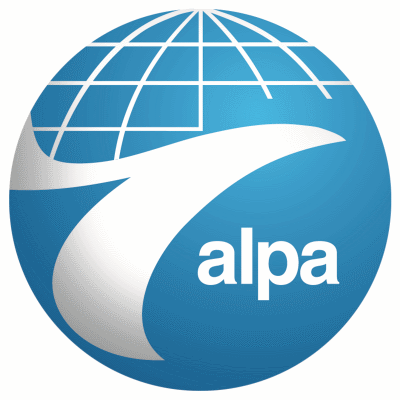Sun, Dec 12, 2021
“There Are Ways That 5G Can Be Deployed While Maintaining Our High Level Of Aviation Safety.."
In response to the recent airworthiness directive issued by the FAA, the Air Line Pilots Association, Int’l (ALPA) once again called on the mobile wireless industry to work cooperatively with the aviation community on implementing mitigations that will ensure an equivalent level of safety by protecting against radio altimeter interference.

Aviation industry representatives recently proposed a safety risk mitigation strategy for the Federal Communications Commission’s and mobile wireless industry’s consideration, which would reduce power levels in the vicinity of airports and heliports that are seen by aircraft, to reduce the safety risks of interference when the 5G signals are activated.
“Maintaining U.S. aviation’s high standard of safety is our primary goal, and aviation experts agree that the recent offer by Verizon and AT&T to place temporary restrictions on 5G transmissions simply do not provide enough protection against radar altimeter interference,” said Capt. Joe DePete, ALPA president. “There are ways that 5G can be deployed while maintaining our high level of aviation safety, and time is running out for the wireless industry and the broader aviation community to work together on implementing mitigations that will ensure that every passenger and cargo flight arrives safely without severe disruptions to aviation operations. We are hopeful that a recent proposal will serve as the basis for further discussion.”

Radio altimeters are key safety components found on all commercial airliners, business aircraft, and helicopters and are susceptible to interference by C-Band 5G wireless systems. During an interference situation, the hazardous or misleading radio altimeter data introduces a significant level of risk to the aircraft at the worst possible time—during approach and landing. It may also reduce or eliminate the functionality of terrain-avoidance systems. This potential 5G interference has been documented as a safety risk by the FAA and multiple aviation safety regulators globally and is the basis for the restrictive ADs issued today.
“Commercial aviation is the safest mode of transportation in the world, and that didn’t happen by accident. As a nation, we made it a priority—and ALPA intends to keep it that way. We commend the FAA for taking this necessary action to ensure that safety is maintained, but there can be no retreat from the extraordinary safety record we have achieved here in America. We must do more to protect these key safety components found on all commercial airliners. In the coming days ALPA will be providing additional information to our membership on operations in a C-Band 5G interference environment,” added DePete.
More News
From 2023 (YouTube Edition): "Ain’t Your Daddy’s Super Cub”—Don Wade Co-owned by Don and Ron Wade—the former of Don’s Dream Machines, a storied >[...]
Pilot-Rated Passenger Reported That The Pilot Did Not Adequately “Round Out” The Landing Flare And The Airplane Bounced And Yawed To The Right Analysis: The pilot state>[...]
Dead Reckoning Dead reckoning, as applied to flying, is the navigation of an airplane solely by means of computations based on airspeed, course, heading, wind direction, and speed,>[...]
Aero Linx: Lake Amphibian Club This website is created and sponsored by the Lake Amphibian Club, to help spread the word about these wonderful, versatile amphibians that can land j>[...]
“I am deeply honored to be sworn in as NASA administrator. NASA’s mission is as imperative and urgent as ever — to push the boundaries of human exploration, ignit>[...]
 Classic Aero-TV: In Praise of Alabamas Patriot Aircraft USA
Classic Aero-TV: In Praise of Alabamas Patriot Aircraft USA NTSB Final Report: Cirrus Design Corp SR22
NTSB Final Report: Cirrus Design Corp SR22 ANN's Daily Aero-Term (12.21.25): Dead Reckoning
ANN's Daily Aero-Term (12.21.25): Dead Reckoning ANN's Daily Aero-Linx (12.21.25)
ANN's Daily Aero-Linx (12.21.25) Aero-News: Quote of the Day (12.21.25)
Aero-News: Quote of the Day (12.21.25)




